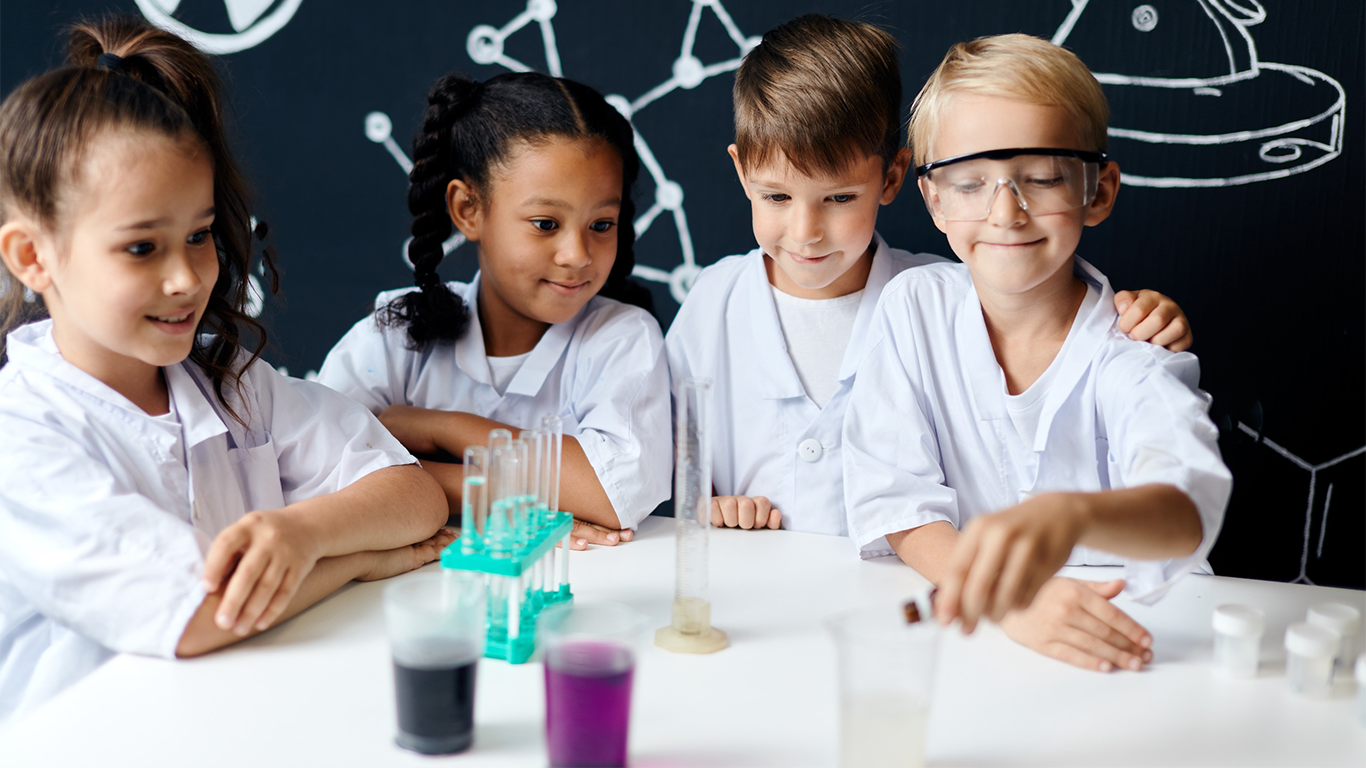Arizona’s future generations face amazing opportunities. With Arizona becoming a leading recipient of billions of dollars in investments in high-tech industries like semiconductors and aerospace, today’s young people must acquire new skills and technical knowledge to participate and reap the rewards.
And what better way to prepare a new generation of skilled and inspired professionals capable of delivering those modern achievements on a global scale than through an enhanced commitment to STEM (science, technology, engineering and mathematics) education?
Today, it is incumbent upon parents and educators alike to help motivated young students take their first steps on the path to becoming tomorrow’s leaders — scientists, policymakers and innovators in those high-tech, high-paying industries. Schools play an important role in addressing impending skill deficiencies and supporting STEM and hands-on learning priorities more proactively so the young people poised to lead our communities are well-prepared. That process can and should start by emphasizing STEM concepts early in child development.
Research has consistently shown that exposing students to STEM concepts in early childhood helps them lay a foundation for knowledge they will build on as they get older. But the educational support for STEM learning initiatives and STEM-focused curricula must continue throughout elementary, middle and high school, with some online and non-traditional learning models already providing a template for how to do just that. These online programs, like K12, offer a seamless progression by combining interactive learning tools, project-based activities and virtual labs that engage students at each educational stage.

As students progress through elementary levels, they encounter more complex problem-solving tasks in coding, robotics and applied sciences, all while accessing resources from the comfort of home. In Arizona Virtual Academy’s Reaching Intellectual Success and Excellence (RISE) program, for example, students use a “Science Scrapbook” to document their problem-solving journey — a space for sketches, notes and iterative changes rather than a formal report. This approach encourages students to reflect on what worked, what didn’t and how they solved challenges, creating a conversation around their learning. This personalized tool fosters critical thinking, and as students prepare for a final presentation, a “dress rehearsal” in their regular class group gives them practice in explaining their projects clearly and confidently. The final student presentation, conducted for all RISE/STEAM students, enables them to share their journey and learn from each other.
Middle and high school programs continue this trajectory with advanced coursework in engineering, math and technology, leveraging the flexibility of the online model to provide individualized learning paths and real-world applications in STEM fields. By delivering personalized support, a wide range of curriculum options and extracurricular activities like coding clubs or STEM competitions, these online platforms provide a sustainable and scalable approach to STEM education that can support learners throughout their academic journey.
Armed with a robust STEM education, these students will be able to fill the significant number of STEM jobs available in the U.S. — a number expected to grow. The U.S. Bureau of Labor Statistics forecasts an increase of nearly 10%, rising to approximately 11.4 million jobs by 2032. Here in Arizona, businesses and government leaders are preparing for a future marked by renewed, national commitment to semiconductor manufacturing, which will require a STEM-educated workforce throughout the entire ecosystem, including manufacturing, advanced packaging, research and development, equipment and supply chain. These professionals will make direct and meaningful contributions to an Arizona economy dominated by STEM jobs.
Preparing today’s students for tomorrow’s STEM occupations that will change the world comes with a wide range of additional benefits. STEM learning encourages innovation and has been shown to spark creativity, critical thinking and collaborative problem-solving engagement with peers. STEM teaches students to persevere, adapt and overcome. And because STEM-related studies often have a direct and relatable connection to real-world challenges and solutions, students who participate in STEM learning are exposed to the ideas and issues that will shape our shared future.
Human ingenuity and creativity can go a long way in today’s economy — but by instilling in young people the skills and mindset to thrive in tomorrow’s workforce, we can create a future generation of STEM-minded leaders, innovators and professionals riding a wave of economic prosperity.
Author: Since joining Arizona Virtual Academy in 2005, Marsha Segard has taught various grade levels, focusing on engaging students in hands-on projects that integrate STEM skills. After earning her K-12 Gifted Endorsement in 2010, she became an advanced learners program teacher, where she introduced coding and robotics, guiding students through competitions. Segard was instrumental in launching the school’s science, technology, engineering, arts and mathematics (STEAM) program and aligning it with the gifted program.




